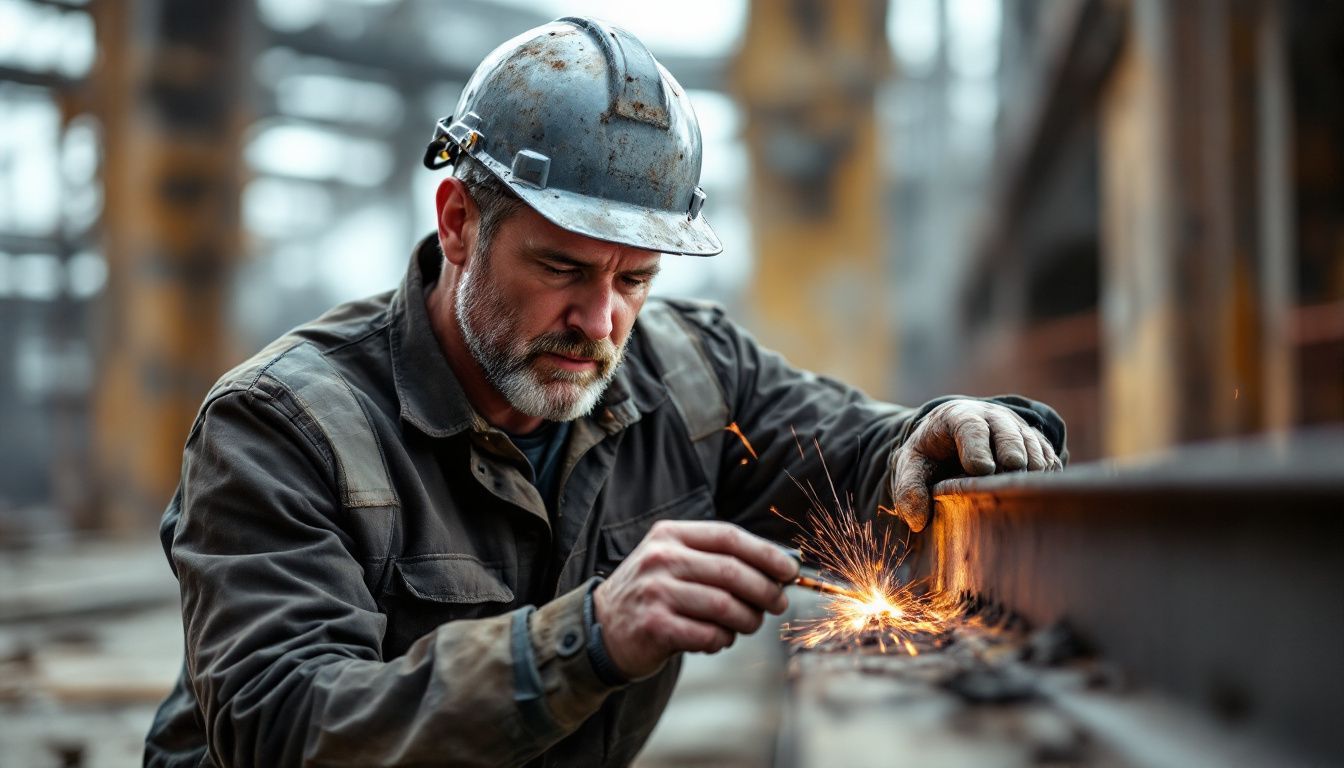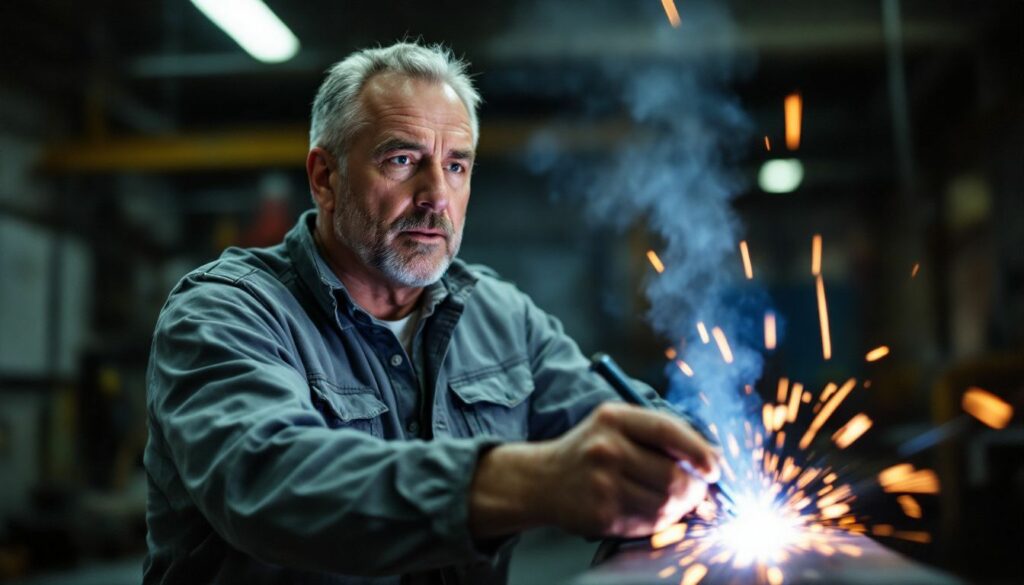Worried about the safety of your welded structures? The importance of welding inspections ensures every weld meets quality and safety standards. This article explains how certified welding inspectors can help you maintain high-quality welds.
Discover why proper inspections are essential for your projects.
Key Takeaways
- Safety First: Certified welding inspectors ensure all welds are strong and safe, preventing accidents in buildings, bridges, and pipelines.
- Quality Control: Inspectors check for defects like cracks and porosity using methods such as visual and ultrasonic testing to maintain high-quality standards.
- Regulatory Compliance: They make sure welding work meets industry codes and standards, avoiding legal issues and ensuring project reliability.
- Cost Savings: Early detection of problems by inspectors reduces repair costs and prevents costly structural failures.
- Skilled Oversight: Certified inspectors from organizations like the American Welding Society provide expertise and training, enhancing overall welding quality.
Importance of Weld Inspection

Weld inspection ensures welded joints meet quality and strength standards. Certified welding inspectors examine welds before, during, and after the welding process. They check for defects such as porosity and lack of fusion.
These inspections maintain the integrity of structures in construction and metal fabrication.
Thorough weld inspections guarantee the safety and reliability of critical structures.
Regular weld inspections help comply with welding standards and safety regulations. Identifying defects early prevents accidents and reduces costs. Annual inspections are needed for high-stress welds, especially in the oil and gas industry.
Quality control through inspections protects workers and upholds structural integrity.
Ensuring Structural Integrity and Safety
Certified weld inspectors ensure structures are safe and strong. They check each weld to find flaws that could cause problems. Good welds make buildings, bridges, and pipes last longer and stay reliable.
Inspectors use tools like visual checks and non-destructive tests to spot issues such as cracks or rust. They enforce safety rules to protect people from dangers like building collapses or leaks.
Meeting quality standards keeps structures safe in many industries.
Welding jobs have risks like burns, eye injuries, and breathing harmful gases. Weld inspectors watch these jobs to make sure safety steps are used. They verify that welders use the right materials and follow technical specifications.
Proper ventilation and protective gear reduce these risks. Inspectors also ensure that welding joints are strong and flexible to handle pressures and stresses. Maintaining high-quality standards helps avoid accidents and keeps structures safe and dependable.
Compliance with Welding Standards
Maintaining structural integrity and safety requires adherence to strict welding standards. In-house certified welding inspectors play a crucial role in ensuring quality and regulatory compliance.
These inspectors are certified by organizations like the American Welding Society. They verify that welding work meets codes and project specifications, upholding weld quality assurance.
Following standards helps prevent welding defects and safety risks. Techniques such as visual inspection, ultrasonic testing, and magnetic particle testing are used to detect issues.
Documentation from these inspections provides a history of quality control measures and corrective actions. Compliance with welding standards ensures the reliability and safety of infrastructure projects.
The Role of Certified Welding Inspectors
Certified Welding Inspectors (CWIs) hold certifications from organizations like the American Welding Society. They oversee welding projects to ensure each weld meets specified standards and codes.
CWIs use various inspection methods, including non-destructive testing and dye penetrant testing, to check the quality of the welds. They identify and interpret flaws, ensuring the strength and reliability of the base metal and filler metal used.
By conducting thorough inspections, CWIs help prevent hazards and reduce the risk of catastrophic failures.
CWIs also ensure compliance with technical specifications and project requirements. They provide ongoing training to welders, promoting high standards in the field of welding. In-house CWIs lead to cost savings and more efficient operations by catching issues early.
However, companies may face challenges in hiring qualified inspectors and managing hiring costs. Overall, CWIs play a crucial role in maintaining safety and quality in various industries, ensuring that every step of the welding process upholds integrity and reliability.
Types of Weld Inspections
Different weld inspection methods help maintain quality and safety in structures. Certified inspectors use these techniques to find any flaws and ensure all standards are met.
Non-Destructive Testing Methods
Non-Destructive Testing (NDT) methods are essential for evaluating weld quality without causing damage. These techniques help ensure safety and compliance with standards.
- Visual Inspection
Inspectors examine welds for surface defects like cracks or porosity. This method involves using tools like magnifying glasses and mirrors to see all aspects of the weld. - Liquid Penetrant Testing
A dye is applied to the weld surface to reveal cracks or other flaws. After a set time, the excess dye is removed, and a developer makes defects visible. - Magnetic Particle Testing
This technique detects surface and near-surface defects in ferromagnetic materials. A magnetic field is applied, and iron particles highlight any discontinuities. - Radiographic Testing
X-rays or gamma rays pass through the weld to create an image. This method reveals internal flaws such as voids or cracks that are not visible externally. - Ultrasonic Testing
High-frequency sound waves are sent through the weld. Reflections from flaws are detected, providing detailed information about the weld’s integrity.
These NDT methods improve inspection accuracy and reliability. Advanced technology in NDT allows for faster and more precise evaluations, ensuring that welds meet required levels of quality and safety.
Destructive Testing Methods
Destructive testing methods break welds to check their quality and strength. These tests give detailed information about weld integrity.
- Tensile Testing
Measures how much force a weld can handle before breaking. This ensures the joint strength meets technical standards. - Bend Testing
Bends the weld to check its ductility and adhesion. It confirms that the weld can withstand mechanical stress without cracking. - Hardness Testing
Checks the hardness of the weld metal. This ensures resistance to wear, corrosion, and maintains the correct weld size. - Impact Testing
Applies sudden force to the weld to test its toughness. It assesses how the weld performs under different temperatures and stress conditions. - Macro Etch Testing
Cuts and corrodes the weld to examine its internal structure. This reveals any defects like cracks or porosity, ensuring the materials used are reliable. - Charpy Test
Measures the energy absorbed by the weld during fracture. It indicates the weld’s ability to handle sudden impacts and maintain joint integrity.
Comparison of Different Welding Techniques
Understanding different welding techniques is key to selecting the right method for each job.
| Welding Technique | Suitable Weld Types | Advantages | Common Faults | Applications |
|---|---|---|---|---|
| MIG Welding (Metal Inert Gas) | Butt Joint, Lap Joint | High speed, easy to learn | Porosity, incomplete penetration | Automotive, fabrication shops |
| TIG Welding (Tungsten Inert Gas) | Corner Joint, Edge Joint | Precise, high-quality welds | Burn-Through, slag inclusions | Aerospace, piping systems |
| Stick Welding (Shielded Metal Arc) | Tee Joint, Butt Joint | Versatile, works outdoors | Lack of fusion, undercutting | Construction, repair work |
| Flux-Cored Arc Welding (FCAW) | Butt Joint, Lap Joint | High deposition rate, less shielding gas | Corrosion, burn-through | Shipbuilding, heavy machinery |
Documentation and Record-Keeping
Accurate documentation and record-keeping are essential after comparing different welding techniques. Records show each inspection, findings, and any fixes made. This history ensures traceability and accountability in welding operations.
Certified welding inspectors maintain these records to meet codes and standards. Detailed documents help ensure quality and integrity in every weld. They support regulatory compliance and quality control, making sure all specifications are met.
Good records also help prevent big failures by catching problems early. Inspection services rely on thorough documentation to uphold safety measures and maintain reliable welding practices.
Conclusion
Weld inspection keeps our buildings and vehicles safe. Certified inspectors check each weld to meet strong standards. They find problems early, preventing accidents and saving money.
New technologies make inspections quicker and more dependable. Good welds build trust and ensure structures last long.
FAQs
1. What is the role of a welding inspector?
A welding inspector checks the quality of welding work. They follow technical standards and project specifications to make sure welders do their jobs correctly. Inspectors examine welds like fillet and butt welding to find any problems or gaps.
2. How does weld inspection improve welding quality?
Weld inspection and quality control ensure all welds meet the required standards. Inspectors use different techniques to look at both the inside and outside of welds. This helps maintain high quality and prevents defects.
3. What safety gear is needed for welding inspection?
Welding inspectors must wear personal protective equipment, including helmets, gloves, and protective clothing. This gear protects them from heat, sparks, and other dangers while examining welding work.
4. Why are technical specifications important in welding?
Specifications guide the welding process, ensuring the right base materials and methods are used. They help predict how welds handle stress and heat, making pressure vessels and pipes reliable.
5. How do welding inspectors help save costs?
By ensuring welds are done correctly, inspectors help avoid expensive repairs and failures. Their audits and testing catch issues early, reducing waste and improving the use of automation and reliability engineering.
6. What methods do welding inspectors use to check weld quality?
Inspectors use various techniques, such as visual exams and cross-sectional tests. They check for gaps in sheet metal and specific weld types. These methods ensure all welding meets the project’s specifications.
ast and Reliable Mobile Welding Services
Call us at (623) 263-0277 for top-notch mobile welding services! Visit us today for expert assistance and get your welding projects done on-site, quickly and efficiently.

